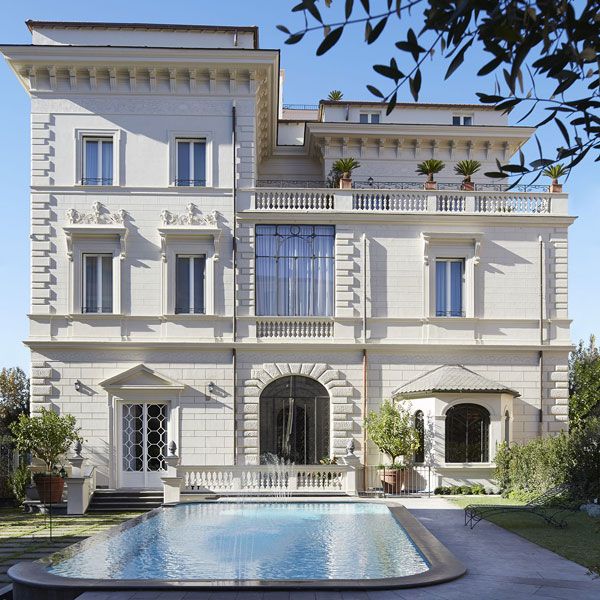RESTORATION AND REFURBISHING PLASTER
Restoration of deteriorated plasters due to humidity, infiltration and efflorensibility
The restoration and/or reconstruction of the plaster damaged by time is an intervention to safeguard both the decorum of the buildings and the perimeter masonry: from the classic symptoms of infiltration, rising damp and salt efflorescence that deteriorate the aesthetics and also cause detachment from the brick support.
We also offer reinforced plasters that improve mechanical strength, avoiding the formation of cracks / cracks arising for example from an intense neighboring road traffic.
NATURAL PLASTERS AND BIO-BUILDING
The term BIO-BUILDING refers to particular construction methods and materials coming from nature. Obviously the latter are natural and therefore not artificially produced by man. Unlike the usual building sector where man-made building materials are used and used for thousands of years, such as: iron, cement.
BIO-BUILDING uses natural products for the construction of structures, building works made of eco-compatible materials. A good modern example are the houses, usually small villas, made entirely of pine wood or other materials, used according to the ease of retrieval in the various world nations, which are made with wooden beams arranged in a sandwich with external and internal walls with insulating air chamber.
These structures, if well built, in fact manage to reproduce the walls and structures of so-called "traditional" dwellings. The advantages of wooden constructions are:
- Wellness and living comfort
- Exceptional eco-compatibility
- High thermal protection
- Absence of humidity
- Static and anti-seismic
- Prefabrication
- High acoustic insulation
- Fire protection
- Durability and maintenance
BIO-BUILDING rediscovers lifestyles that are no longer in use. For example: External light can increase the brightness of indoor environments by reducing the need to consume electricity; The applications of solar panels that are generally of two types:
- The solar thermal panel, which uses the Sun's energy to heat water or other fluids, generally for heating the house or for hot water
- The photovoltaic solar panel, which uses solar cells to convert the energy of the Sun (electromagnetic radiation) into electricity, thanks to the photovoltaic effect.
The use of natural and renewable resources also in the cooling of environments through the use of underground air ducts or through the management of natural ventilations or air movements. As in the torrid summers of the 1970s, he was pleasantly refreshed by opening the front door and circulating the cool air of the stairs. Small tricks of our past that eco-architecture reuses in a scientific way. Natural cooling avoids the use of electric air conditioners with great savings in electricity on the bill and with great reduction of external pollution.
Green building draws a new concept of "green building" in full respect of the environment, with less expense for those who will live there. Green building can reduce household energy expenditure by 50% and reduce the pollution of CO2 produced by heating, lighting and air conditioning does not in any way reduce the pleasure of living in one's own home, indeed it has as its purpose precisely the improvement of well-being and quality of life.
New homes have special features that reduce pollution and consumption and expenses without affecting the comforts of modern living. It is therefore a response to the search for a better quality of life now lost in the congestion of modern cities. In short, green building has sometimes higher costs, but allows an advantage in terms of well-being and savings in the bill, as well as increasing the asset's asset value.
Art Deco - Restoration and refurbishing plaster

A 01

A 02

A 03

A 04

A 05

A 06

A 07

A 08

A 09

A 10

A 11

A 12

A 13

A 14

A 15

A 16

A 17

A 18

A 19

A 20
DEHUMIDIFYING PLASTERS AND CHEMICAL BARRIERS
The use of a transpirable macroporous dehumidifying plaster guarantees the evaporation of water from the wall to the outside, emptying the room of humidity, and at the same time allows the formation of a barrier against rising damp, with the result of remove salt efflorescence and dry the masonry.
Art Deco - Restoration and refurbishing plaster

01

02

03

04

05

06

07

08

09

10

11

12

13

14

15

16

17

18

19

20

21

22

23

24
ARMORED PLASTERS FOR WALL CONSOLIDATION
Most of the existing buildings in the historic centers of European cities consist of ordinary masonry of bricks, pebbles or stone. Depending on the size and shape of the elements, their origin, the type of block and the quality of the mortar, various textures can be found for the walls.
Frequently these buildings have multiple facing masonry, with or without an effective connection between them. In the presence of seismic actions, the vertical walls are subject to high horizontal actions in the plane (cut) and out of plane (bending).
The interventions of wall consolidation by ARMORED PLASTER are carried out by combining two different elements: MATRICES (mortars) and REINFORCEMENTS (nets or fabrics).
Art Deco - Restoration and refurbishing plaster

A 01

A 02

A 03

A 04

A 05

A 06

A 07

